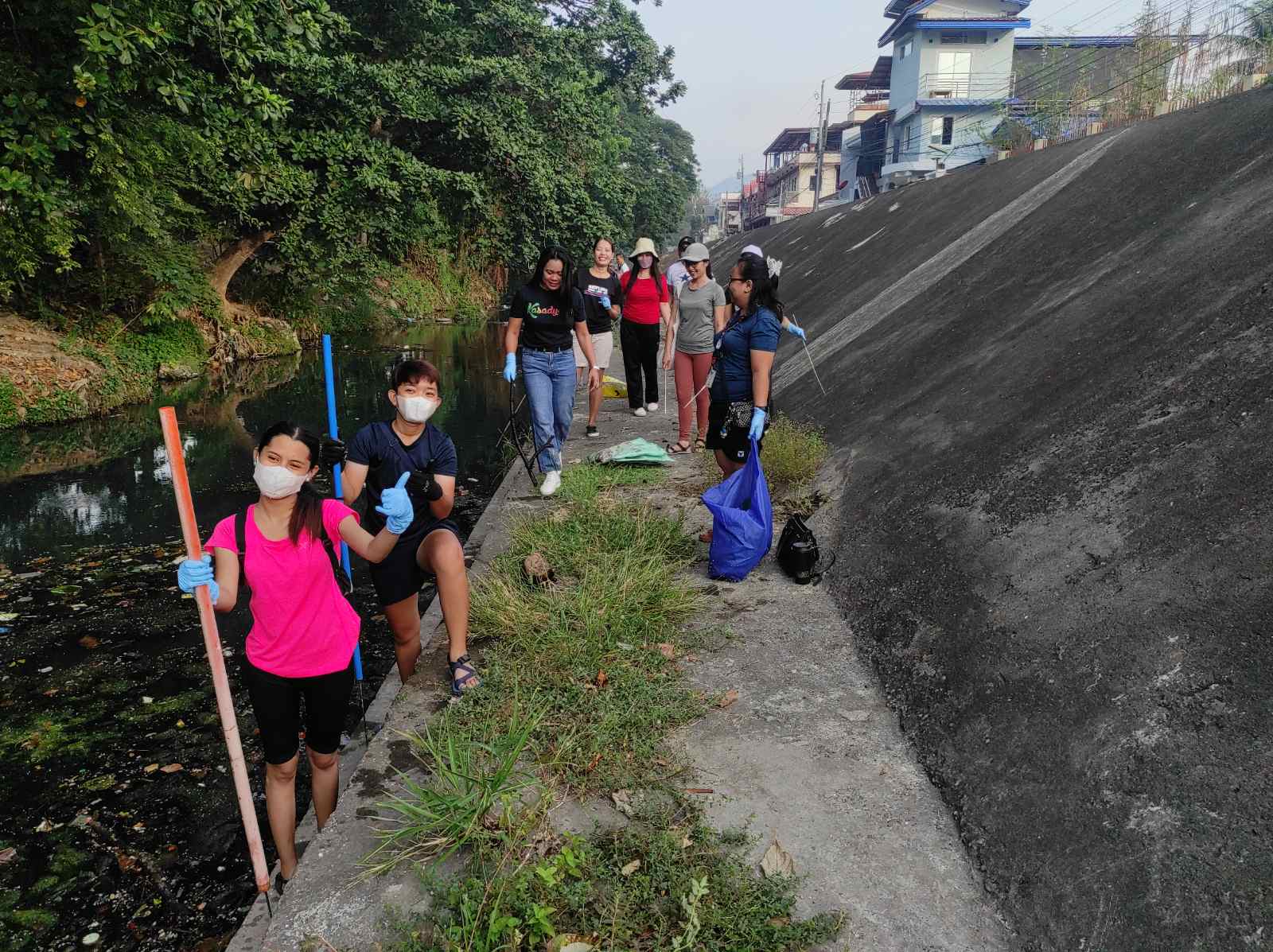DUMAGUETE CITY, Negros Oriental (PIA) — Youth volunteers Angel Tomo and Bianca Isabelle Lingcong, both students of Foundation University, are hopeful that the Banica River will be revitalized through the sustained efforts and cooperation between the community and the government.
Tomo and Lingcong joined the simultaneous Banica River Clean-Up held in major segments of the riverway on June 5.
At 6:00 am, they were already at the clean-up site at the back of their university together with their teachers and adviser of their school group, Earth Care Organization (ECO), and residents of Barangay Taclobo.
They helped collect plastic bottles, Styrofoam, sachets, plastic wrappers, and other trash that polluted the river.
“Pag-anhi nako dire kay na-schock ra pod ko maglantaw. Unlike sa una, I used to suroy here and arang-arang pa to river sa una. Mag-flow pa ang water unlike karon na stagnant ra ang water. Daghan na kaayong basura all over,” Lingcong said.
(I was shocked to see the current state of the river. Unlike before when I used to visit this place, it looked better before. The water was flowing, unlike now where it looks stagnant and there is plenty of garbage all over.)
She hopes that there will be consistent river clean-up activities and that more young people would be involved.
“Important kaayo kay kita ra man ang maka-benefit sa atong ginabuhat dinhi kining pagpanlimpyo. We are the next generation na maka-benefit sa kalimpyo sa suba. Hopeful ko (na ma-restore ang Banica) as long as consistent ang atong paglimpyo dire,” Lingcong added.
(It is important to participate in this because we are the beneficiaries of what we are doing today – this clean-up drive. We are the next generation who will benefit if Banica is restored to its clean state. I am hopeful that the Banica River will be restored as long as clean-up efforts are consistent.)
Meanwhile, Tomo said the cooperation of the community is important.
“As youths we also need to help clean (and participate) in these kinds of activities. If kani siya ma-maintain gud ug if naay higher (people) na maka-help ani, and if (this is done) every day, we can make sure na malimpyo gud ni siya,” Tomo said.
(If this will be maintained and if more people will participate in this and if it is done every day, we can make sure Banica will be restored.)

RIVERS for LIFE
The Department of Environment and Natural Resources (DENR) Negros Oriental initiated the clean-up activity to mark World Environment Day, which was observed on the same date.
DENR gathered 294 volunteers from 10 barangays in Dumaguete City located along Banica’s riverway and 12 line government agencies and private institutions to collect trash from the river.
A total of 188 sacks of trash or 1,406 kilos of garbage were collected by the volunteers.
The trash collected were composed of single-use plastic bags, food packaging like Styrofoam, plastic wrappers, plastic straws, utensils, cans, sachets, juice sachets, personal hygiene trash like diapers, sanitary pads, condom, syringes, pet bottles and caps, glass, non-food packaging Styrofoam, pieces of clothes, bamboo poles and other types of wood, rubber materials, and water hyacinths.
The clean-up sites include river segments near Foundation University, Bureau of Internal Revenue office, Calindagan-Tinago, Batinguel, and Cadawinonan.
DENR information officer Jeanette Orcullo said conducting the river clean-up is consistent with their agency’s advocacy of revitalizing the Banica River under the government’s ‘RIVERS for L.I.F.E.’ program.
It is also a way of fostering commitment among community stakeholders in taking care and restoring Banica River to its original state which was a source of pride in Dumaguete City back then.
DENR provincial director Viernov Grefalde, in a Kapihan Sa PIA forum, said the Banica Revitalization Project has four components or clusters which are Information, Education, and Communication (IEC) cluster, partnership and community mobilization cluster, aesthetic and water quality improvement cluster, and solid waste management cluster.
Grefalde emphasized that it is also important for the community to be involved and be active in this program since Banica River is a vital water source in the city.
“We hope the community will be involved. Samot na ang direct community beside the river. Ma-involve sila to educate the people on solid waste management, education on how to (convince ang mga) tawo na dili na molabay sa suba, ug dili abusaran ang suba. Kinahanglan kita tanan mag-usa,” Grefalde said.
(We hope the community will be involved, especially the communities that are located directly beside the river. We hope they will be involved in educating other people on solid waste management, in convincing other people to avoid throwing trash in the river, and educating people to stop abusing the river. We need to be united on this.)
Based on data from DENR, Banica River spans 20.70 km in length and covers 3,795 hectares of land encompassing Valencia town and Dumaguete City.
The riverway passes through barangays Apolong, Sagbang, Balabag, Palinpinon, and Balugo in Valencia and Barangays Tinago (Poblacion 1), Poblacion 2, Poblacion 8, Calindagan, Bagacay, Tabuctubig, Taclobo, Batinguel, Cadawinonan, Junob, Candau-ay, and Balugo in Dumaguete City.
Grefalde recalled that the river used to have lush foliage along its banks and it was a place where residents would hold picnics and hold recreational activities when its waters were not yet polluted.
Considered a major natural landmark in the city, residents from Dumaguete City and nearby Valencia town also use the river’s water for laundry, agriculture, and livestock raising.
A 2014 study conducted by the Negros Oriental State University cited that “the physico-chemical characteristics of Banica’s water are favorable for growth and survival of fish and crustaceans.”
However, due to increased human activities over time, especially the indiscriminate throwing of garbage, Banica River’s waters began to deteriorate.
Grefalde stressed it is important that everyone must be involved in the restoration project because the current state of the river reflects the people’s attitude towards nature and natural resources. (RAL/PIA7 Negros Oriental)













